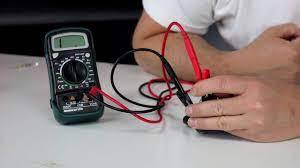
How to Troubleshoot an ATV Spark Plug Coil
Share
How do you know if your spark plug coil needs to be replaced?
ATVs (All-Terrain Vehicles) are popular recreational vehicles that provide thrilling off-road experiences. However, like any other machine, they can encounter issues from time to time. One common problem ATV owners may face is a faulty spark plug coil. The spark plug coil is responsible for generating the electrical spark needed to ignite the fuel mixture in the engine.
Troubleshooting Steps
-
Step 1: Visual Inspection
Begin by conducting a visual inspection of the spark plug coil. Look for any signs of physical damage, such as cracks or frayed wires. If you notice any visible issues, it may indicate a need for replacement.
-
Step 2: Check for Resistance
Using a multimeter set to the Ohms setting, check the resistance of the spark plug coil. Consult your ATV's manual or the manufacturer's specifications for the correct resistance range. If the resistance falls outside of the specified range, it is likely that the coil is faulty.
-
Step 3: Test the Spark Plug
If the spark plug coil appears to be in good condition, the issue may lie with the spark plug itself. Remove the spark plug and inspect it for signs of wear or fouling. Consider replacing the spark plug if necessary.
-
Step 4: Check the Wiring
Ensure that all wiring connections related to the spark plug coil are secure and free from corrosion. Loose or damaged connections can affect the performance of the coil. If you find any issues, repair or replace the wiring as needed.
-
Step 5: Test the Ignition System
If the above steps do not resolve the issue, it may be necessary to test the entire ignition system. Consult your ATV's manual or seek professional assistance for this task, as it involves more advanced knowledge and equipment.
-
Step 6: Clean or Replace the Coil
If you have determined that the spark plug coil is indeed faulty, you have the option to either clean it or replace it. Cleaning the coil involves removing any dirt, debris, or oxidation that may be affecting its performance. Use a soft brush or compressed air to clean the coil gently. However, if the coil is severely damaged or cleaning does not improve its functionality, it is recommended to replace it with a new one.
-
Step 7: Reassemble and Test
After cleaning or replacing the spark plug coil, reassemble all the components back in place. Double-check all the connections and wiring to ensure they are secure. Start the ATV and test its performance. If the issue persists, it might be necessary to seek professional assistance.
Preventive Maintenance Tips
Regular maintenance can help prevent spark plug coil issues in your ATV. Here are some preventive measures you can take:
- Keep the ATV Clean: Dirt, mud, and debris can accumulate on the spark plug coil and hinder its performance. Clean your ATV regularly to prevent this buildup.
- Inspect and Replace Spark Plugs: Regularly inspect the spark plugs for signs of wear or damage. Replace them according to the manufacturer's recommendations.
- Check Wiring Connections: Routinely check the wiring connections related to the spark plug coil. Ensure they are secure and free from corrosion.
- Follow Maintenance Schedule: Adhere to the maintenance schedule provided by the ATV manufacturer. This includes regular tune-ups and inspections.
Conclusion
Troubleshooting an ATV spark plug coil issue requires a systematic approach. By following the steps outlined above, you can diagnose and address common problems with the spark plug coil. Regular preventive maintenance can also help minimize the occurrence of such issues. Remember, if you are unsure or uncomfortable performing these tasks yourself, it is always best to consult a qualified ATV mechanic for assistance. Proper maintenance and troubleshooting will ensure that your ATV continues to provide you with many exciting adventures.
